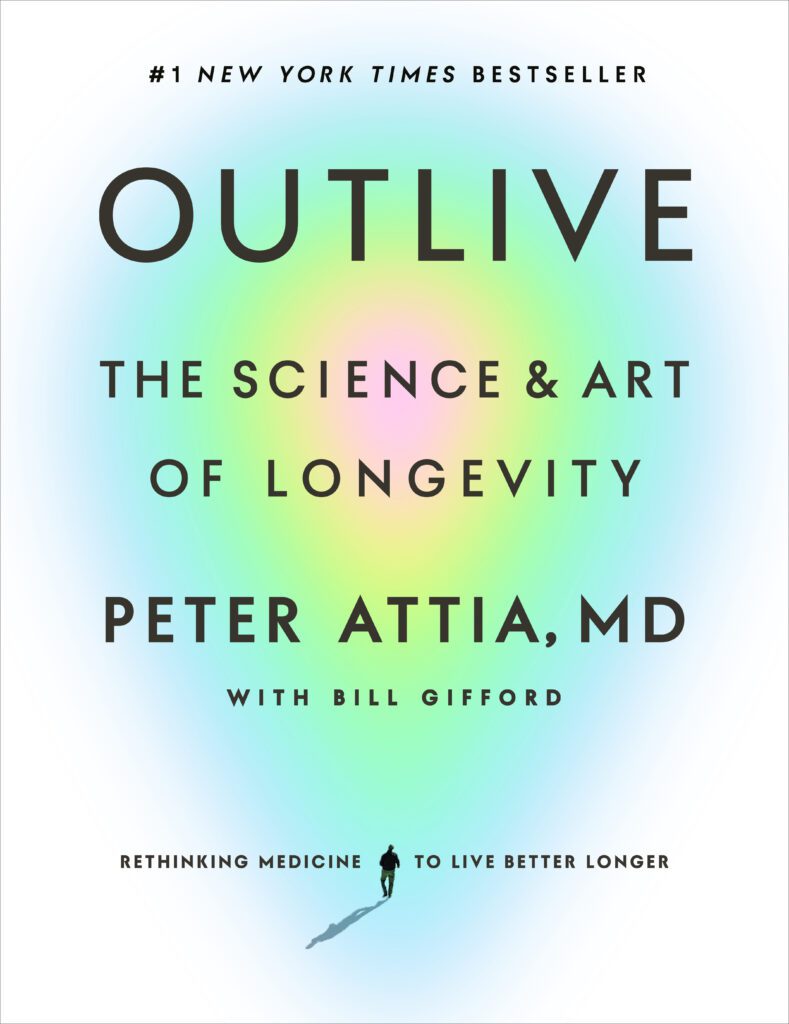

Last November, as I lay in my bed recovering from foot surgery, my husband came home from a doctor’s appointment and told me that he needed surgery, too. A quadruple bypass. He’s 52. Needless to say, this experience has lit a fire under our asses to re-examine our diet and habits. Part of our effort has been educating ourselves about moving into our fifties and sixties without losing strength, mobility, and most importantly, our lives.
Look, we’re all gonna die. I don’t have dreams of living forever. But at my age, it’s becoming abundantly clear that if I don’t invest our time, energy, and money into maintaining our health and preventing disease, it can overtake us quickly. I saw a rapid decline in my own health as I recovered from food surgery and found myself unable to do many of the physical activities I rely on to stay healthy (and sane). Which is to say, the shit can go downhill pretty fast when you’re in your fifties and not using your body well.
Enter: Outlive, a book by a doctor named Peter Attia. My husband bought and read this, and then encouraged me to read it, too. I’m glad I did. I might read 1-2 books a year on health/fitness – it’s not a topic I enjoy reading about – but I found it helpful. Outlive offers a respectable amount of information on science and medicine, engaging anecdotes on Attia’s experience as a patient and a doctor, and a simple structure for thinking about preventative medicine. And really, that’s the crux of the book: preventing disease.
Attia doesn’t beat around the bush – if we want to maintain our health in our golden years, we must begin early and make space in our busy lives to understand our bodies and how our healthcare system works. No one else will do it for us. He structures the first part of the book around the pathologies inherent to the ‘four horsemen’ of disease in America: cancer, diabetes, cardiovascular disease, and Alzheimer’s/dementia. Then, he explains in detail how each of these can be influenced (positively or negatively) by our choices starting in our 20s and 30s, and how important it is for us at any age to pay attention to our risk factors.
The book is good, but it’s too long. This information could be condensed into something far more readable and accessible to the average person. The hardcover clocks in at 496 pages, which became a slog after a while (again, it’s not my favorite topic to read about – if you enjoy this topic, the book might be more enjoyable for you). I found myself skimming some of the more technical information. I suppose a book on medicine written by a doctor should be substantial enough to command respect in the marketplace. I get that. Still, it’s a commitment to read this thing, and I don’t think most people who need to read it will.

